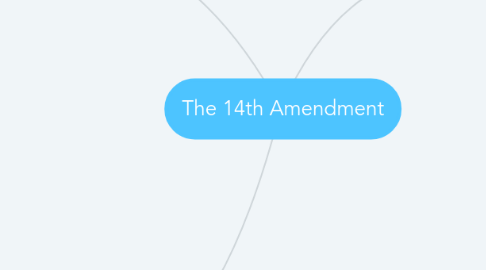
1. Court Cases
1.1. Please v. Ferguson: 1896
1.1.1. Plessy was arrested for sitting in a "white only" section.
1.1.2. He sued the S.C. because he's 14th amendment rights were violated.
1.1.2.1. The 14th amendment was passed in result to Black Codes.
1.1.2.1.1. Southern States passed Black Codes to limit African American rights. An example of black codes is African American people could not marry.
1.1.2.1.2. The 14th amendment says no State can deny any person their rights. Each citizen deserves equal protection and no state can deny this.
1.1.3. The S.C ruled that it is okay to be separate as long as it was equal.
1.1.3.1. In reality separate facilities were not equal
1.2. Brown v. The Board of Education:1945
1.2.1. Thurgood Marshall was a National Association for Advancemnt of Colored People was the lawyer who argued the case.
1.2.1.1. NAACP fought Jim Crow laws
1.2.1.1.1. Jim Crow laws limited African American citizens rights. African Americans could not see juries therefore received unfair punishments, racial segregation in schools, buses, private and public places. Jim Crow laws were similar to black codes.
1.2.2. Supreme Court ruled segregation in public schools is unconstitutional
1.2.3. Took 2 years to enforce at state level
1.3. Mills v. The Boarf of Education: 1972
1.3.1. It was ruled that States HAVE to educate students with disabilities.
1.4. Dred Scott v. Stanford: 1857-1861
1.4.1. Dred Scott was a slave owned by an army surgeon who died. He the sued for his freedom.
1.4.2. The S.C. stated that slaves were property not people. The U.S. government could not pass laws that restrict people from doing things to their property.
1.4.3. This court case legalized slavery in the U.S.
1.4.3.1. The 13th amendment was passed, it attempted to abolish slavery but not all states ratified it. (southern states)
2. The different types of acts and court cases explained in this mind map all fought for the same thing. Equal protection. To be treated fair and not discriminated because of your color, gender, religion and more. We all deserve the same rights, we may be different but that doesn't make anyone any less then others.
3. Acts
3.1. Civil Rights Act: 1964
3.1.1. Guaranteed equal voting rights to all citizens.
3.1.2. Ended segregation based on sex and in public places.
3.2. Equal Pay Act: 1963
3.2.1. The equal may act made it ILLEGAL for men to get paid more then women for doing the exact same job.
3.3. Voting Rights Act of 1965
3.3.1. Enforced the 15th amendment which ended the denial to vote because of race.
3.3.1.1. The 15th Amendement guarantees your right to vote. No one can deny your right to vote because of race, region or other characteristics.
3.4. Indian Education Act: 1972
3.4.1. Native americans schools received money to improve education for their students
3.5. Americans with Disabilities Act: 1990
3.5.1. Prevented discrimination in workplaces and guarantees equal opportunities from government programs.
3.5.2. This act provided equal protection for those with physical and mental disabilities.
3.6. Individuals with Disabilities Education Act: 1997
3.6.1. Students are required to receive an education that adapt to their specific disability(s)

